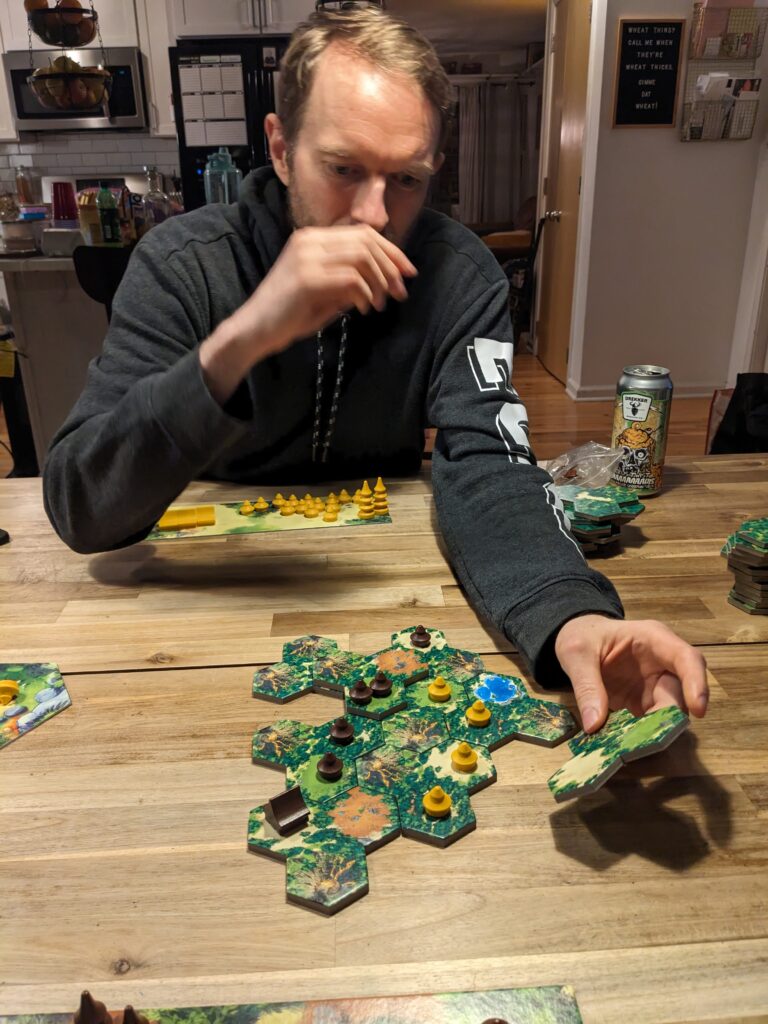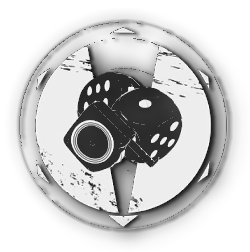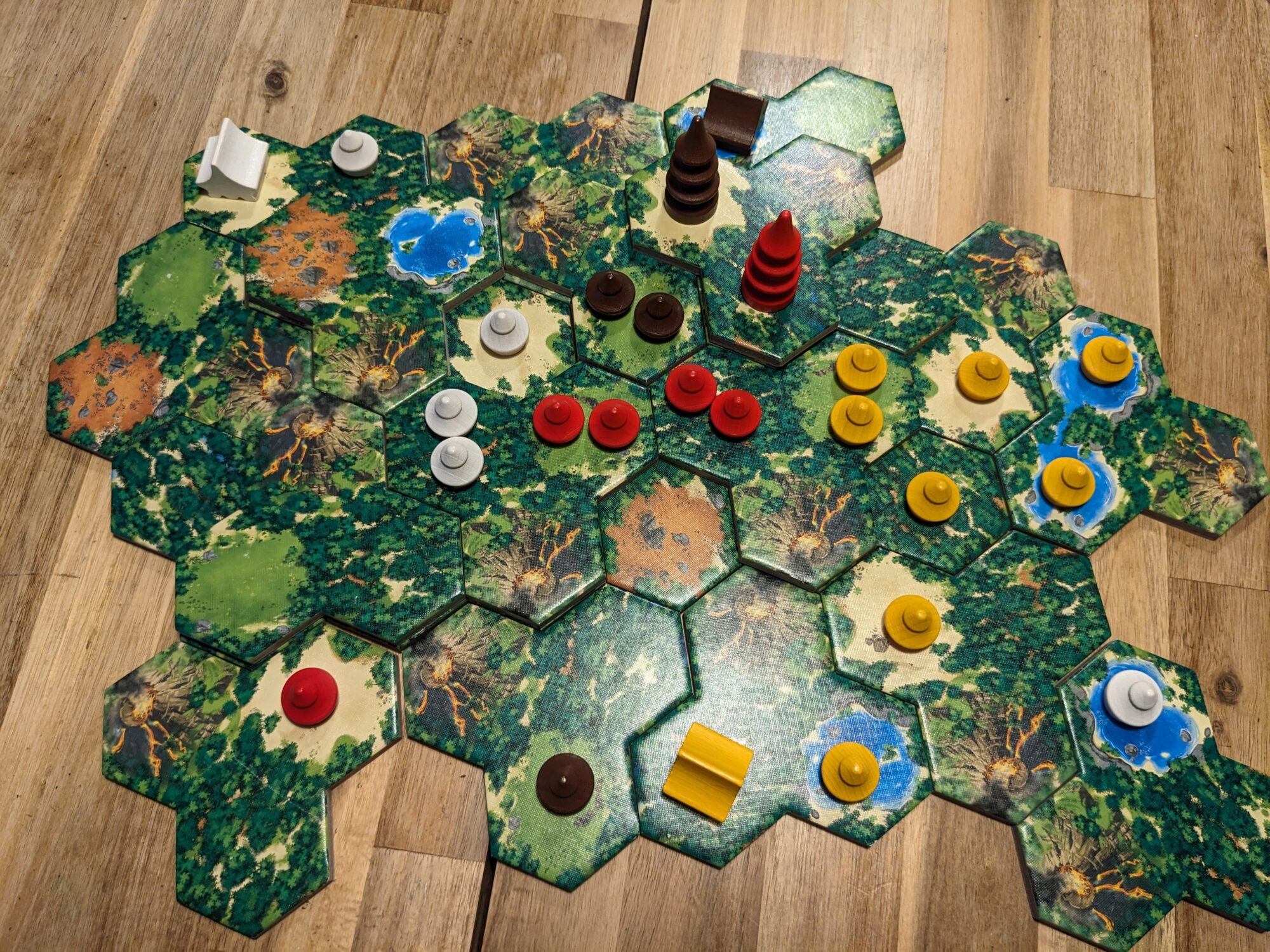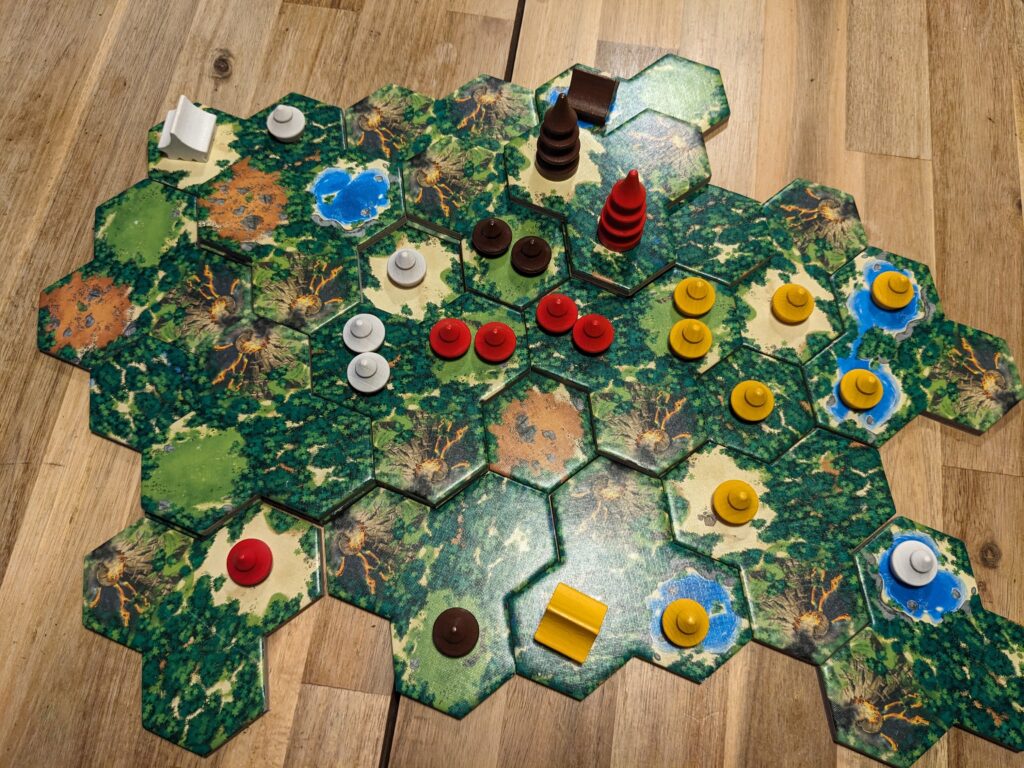Taulva is a beautiful little game that is quick to set up and easy to explain. Watch I’ll teach you how to play right now.
Each turn consists of two actions 1) place a tile and 2) place a building.
- To place a tile, choose one from the facedown stack and align it with any existing hex either on the edge (level 1) or place your volcano on top of another oriented so the tiles are staggered. Your eruption may destroy villages, but cannot wipe out an entire settlement. When villages are destroyed they are placed in the graveyard, not given back to players.
- There are three types of buildings Villages, Temples, and Towers. You can’t build on Volcano hexes. There are Four build actions:
- Start a new Settlement– place a Village on a empty level 1 hex
- Expand a Settlement– choose a Settlement (adjacent hexes you control) and choose a terrain type at its edge to place Villages on. You must place Villages on all hexes of the chosen type at your border, and you place the number of Village building on the hex according to its level. (one on level 1, two on level 2, etc) If you don’t have enough Villages to complete the expand action you can’t take it.
- Place a Temple– Temples can be built on Settlements of size 3 (hexes, not buildings) or greater. Each settlement can have only one Temple. This evaluation is done before the play, so if your settlements are connected later and have more than one Temple, that’s fine. Temples cannot be destroyed.
- Place a Tower– Towers can be built on Settlements at height 3 or greater. Each Settlement can have only one Temple, same evaluation as Temples. Towers cannot be destroyed.
If you are unable to play a building you are out of the game.
That’s gameplay. Turns last until someone wins or the tiles run out, standard setup is 12 tiles per player. To win be the first one to play all of two types of buildings. If no one has won by turn 12 the winner is whoever played the most Temples, with tiebreaker on most Towers, with tiebreaker on most Villages. (villages played, not villages remaining on the board)


Boom, now you’re ready to play. Standard play is with 4 players, but it does just as well, maybe better with two players. (you can play two simultaneous two player games) I do have an expansion with ships, a 5th player, and two hex tiles, but I don’t think they really add anything to the game. I always have a good time with this one and love a chance to bring it out of the closet.



